1. Introduction: Why Ethical Wildlife Photography Matters
Understanding Ethical Wildlife Photography
Ethical Wildlife Photography is an approach that places the well-being and natural behavior of animals above the desire to capture the perfect shot. It requires photographers to be mindful of their impact on the environment and the species they photograph, ensuring that their presence does not disrupt or endanger wildlife. Rather than simply focusing on aesthetics, ethical wildlife photographers prioritize respect for animal habitats and behaviors, documenting them without interference. Ethical Wildlife Photography allows for a more authentic representation of wildlife, where animals can be observed in their natural state, free from stress or manipulation.
The Importance of Ethical Practices in Wildlife Photography
Ethical practices in wildlife photography are essential because they protect vulnerable species and preserve fragile ecosystems. Animals can be highly sensitive to human presence; getting too close can cause them to feel threatened, leading to unnecessary stress or even abandoning their young or nests. Ethical Wildlife Photography encourages photographers to keep a respectful distance, use long lenses, and understand the signals animals may give when they feel uncomfortable. By practicing ethical methods, photographers help minimize harm and contribute to a culture of respect and responsibility within the wildlife photography community.
Moreover, ethical wildlife photography also serves as a powerful tool for conservation. By capturing images that showcase animals in their natural habitat without causing disturbance, photographers can raise awareness about the importance of protecting these species and their environments. These images can educate the public, inspire conservation efforts, and encourage people to respect and preserve nature.
Who Can Benefit from Practicing Ethical Wildlife Photography?
Ethical Wildlife Photography is beneficial for a wide range of people, including wildlife photographers, conservationists, eco-conscious travelers, educators, and students passionate about nature. Beginners gain a deeper understanding of how to photograph wildlife responsibly, which builds a foundation for sustainable practices as they grow in skill. Experienced photographers, too, can reinforce their commitment to ethical standards, serving as role models within the community and inspiring others to adopt responsible methods.
Eco-conscious travelers can practice ethical photography to experience nature with minimal impact, while educators and students can use ethical wildlife photography principles to learn and teach respect for wildlife. In this way, ethical practices foster a collective effort to protect and celebrate nature, transforming each photograph into a moment of advocacy and awareness for the natural world. This responsible approach not only enhances the experience but also contributes.
Amazon Affiliate Disclaimer
This blog post may include links to affiliate sites. If you click on an affiliate link and make a purchase, we may earn a small commission or receive other compensation at no extra cost to you. Please note that many of the links on our site are affiliate links. Our use of these links does not impact the products, services, or websites we recommend to you. This disclaimer covers all forms of communication with you, including our website, email, phone, social media, products, and other platforms.
Amazon Affiliate Disclaimer
We participate in the Amazon Services LLC Associates Program, an affiliate marketing program that allows us to earn fees by linking to Amazon.com and its affiliated sites. If you click on an Amazon affiliate link on our site and make a purchase, we may receive a small commission at no additional cost to you.
2. Principles of Ethical Wildlife Photography
Respect for Wildlife and Their Habitat
A core principle of ethical wildlife photography is respect for animals and their environments. This involves keeping a safe, non-intrusive distance from wildlife to avoid interfering with their natural behaviors. Approaching too closely can cause animals to feel threatened, prompting them to flee, abandon their nests, or even alter essential routines such as feeding or mating. Ethical wildlife photography emphasizes the importance of allowing animals to move, hunt, and interact freely within their habitat. By respecting these boundaries, photographers can capture more authentic, undisturbed moments and help protect animals from unnecessary stress.
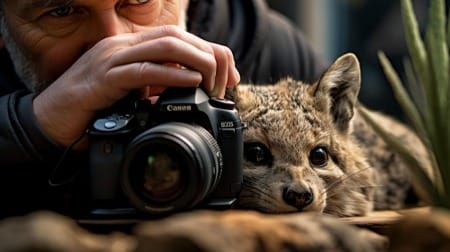
Leave No Trace
Another key aspect of ethical wildlife photography is the commitment to "leave no trace." This principle extends beyond respecting animals to include the environment as a whole. Photographers should be mindful of their impact on delicate ecosystems, ensuring they don’t trample vegetation, disturb habitats, or leave behind any waste. Ethical wildlife photography aligns closely with environmentally responsible practices, encouraging photographers to move lightly, stay on designated paths, and leave natural spaces exactly as they found them. This approach not only protects wildlife but also preserves the landscape for future visitors and photographers.
Being Mindful of Animal Stress Signals
Recognizing and respecting animal stress signals is a crucial skill in ethical wildlife photography. Animals communicate discomfort or distress in various ways, and understanding these signals allows photographers to adjust their approach accordingly. For instance, birds may spread their wings or make specific sounds to signal discomfort, while mammals might exhibit behaviors like tail twitching, backing away, or intense staring. Ethical wildlife photographers know when to back off and give animals more space, prioritizing the well-being of the subject over capturing a particular shot. By responding to these cues, photographers help create a safer environment for wildlife.
Avoiding Manipulation or Baiting
Ethical wildlife photography discourages any form of manipulation or baiting to stage or lure animals into a specific shot. Baiting—using food or sounds to attract animals—can disrupt natural hunting patterns, expose wildlife to potential dangers, and even lead to dependency on humans. Manipulating animals or environments for the sake of a photograph contradicts the ethical values of wildlife photography, as it places the photographer’s goals above the welfare of the animal. Ethical wildlife photographers strive to document animals in their natural settings and behavior without interference, showcasing the authenticity of wildlife rather than creating artificial scenarios.
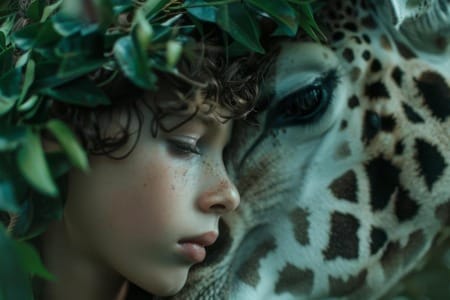
Fostering Empathy and Awareness Through Ethical Photography
Ultimately, the principles of ethical wildlife photography aim to foster a sense of empathy and respect for the natural world. By adhering to these guidelines, photographers contribute to a culture of conservation and respect, encouraging others to view wildlife as sentient beings deserving of protection. Ethical wildlife photography becomes a tool for education, illustrating the beauty of nature while highlighting the importance of preserving it. Through responsible practices, photographers not only capture beautiful images but also become advocates for wildlife, raising awareness about the need for conservation and promoting a deeper connection to the natural world.
3. Recommended Gear for Ethical Wildlife Photography
Choosing Lenses for Safe Distances
One of the most essential components of ethical wildlife photography is maintaining a respectful distance from animals, allowing them to behave naturally without feeling threatened. The right lens can make a significant difference in achieving this goal. Telephoto lenses are highly recommended, as they allow photographers to capture close-up images from a distance, ensuring that they don’t encroach on the animal’s space. Popular telephoto options, such as 300mm, 400mm, or even 600mm lenses, enable photographers to capture detailed shots of animals while remaining far enough away to minimize disturbance. For those new to ethical wildlife photography, investing in a quality zoom lens can provide flexibility and allow for respectful, detailed shots in various wildlife settings.
Lightweight and Low-Impact Equipment
In ethical wildlife photography, it’s essential to consider the environmental impact of the gear itself. Carrying lightweight and low-impact equipment reduces the physical footprint on sensitive terrains, such as grasslands, wetlands, and forest floors, where heavy equipment might damage plants or disrupt habitats. Many mirrorless cameras offer a compact, lighter-weight option compared to traditional DSLRs, making them a practical choice for wildlife photographers who often hike long distances or need to remain mobile. Additionally, a compact setup is less intrusive and helps photographers blend into their surroundings more seamlessly.
Silent Shutter and Low Noise Settings
Noise can be a major disruption to wildlife, especially for animals with sensitive hearing, such as birds and mammals. Ethical wildlife photography recommends using cameras equipped with silent shutter modes to minimize noise and avoid startling animals. This feature is especially useful for capturing candid moments, as it allows photographers to document natural behaviors without interrupting the scene. Many cameras now also offer customizable settings that allow for reduced mechanical noise, making them ideal for ethical wildlife photographers who aim to capture animals in their most undisturbed state.
Using Drones Responsibly
Drones have become popular tools in wildlife photography, providing unique aerial perspectives and allowing photographers to capture expansive shots of animal habitats. However, ethical wildlife photography requires the responsible and respectful use of drones. Drones can be loud and intrusive, potentially disturbing wildlife if flown too close. To adhere to ethical guidelines, photographers should maintain significant distance, avoid flying directly over animals, and limit drone use in particularly sensitive environments. Responsible drone use ensures that photographers can capture breathtaking shots without compromising the safety or comfort of the animals below.
Essential Accessories for Ethical Wildlife Photography
A few thoughtful accessories can enhance the experience of ethical wildlife photography. For example, tripods are invaluable for stability, especially when using long lenses for distant shots. Choosing a lightweight tripod reduces environmental impact while ensuring clear, stable images. Additionally, camouflage gear for both the photographer and the equipment can help them blend into the natural environment, minimizing visual disruption to wildlife. Using accessories that respect the surroundings aligns with the principles of ethical wildlife photography and allows photographers to operate responsibly in any environment.
With the right gear, photographers can practice ethical wildlife photography effectively, capturing stunning images without disturbing the natural world. Each piece of equipment, from the lens to the shutter mode, plays a role in upholding ethical standards, allowing photographers to document wildlife in a way that honors both the beauty of the animal and the integrity of its habitat.
4. Best Practices for Different Environments
Ethical Wildlife Photography in Forests
Forests are rich, biodiverse environments that provide a home to countless species, from large mammals to tiny insects. Practicing ethical wildlife photography in forests requires understanding the sensitivity of this ecosystem and moving with caution. Paths should be followed whenever possible to avoid trampling delicate undergrowth or disrupting animals’ habitats. Moving slowly and quietly is essential, as sudden movements or loud noises can startle wildlife, causing them to flee or abandon important activities. Forest photography also benefits from telephoto lenses, which allow photographers to maintain distance from animals while capturing the rich textures and layers of the woodland scene.
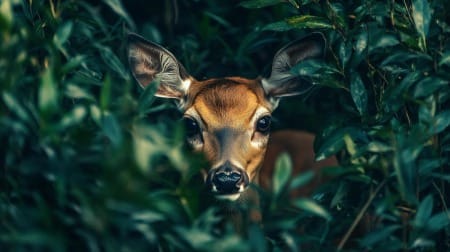
Responsible Photography in Open Plains and Grasslands
Plains and grasslands offer vast, open spaces that are home to large herbivores, predators, and ground-nesting birds. Ethical wildlife photography in these environments involves respecting the visibility that comes with open landscapes. Photographers should avoid approaching too closely, as their presence can be easily detected. Using camouflage gear or staying low to the ground can help minimize visual disruption and reduce the likelihood of animals feeling threatened. For those photographing ground-nesting birds, maintaining a significant distance is crucial to avoid disturbing nests or causing parent birds to abandon their young. The patience to observe from afar aligns well with the principles of ethical wildlife photography.
Guidelines for Coastal and Marine Wildlife Photography
Coastal and marine environments host unique wildlife, from sea birds to marine mammals. Ethical wildlife photography in these settings requires photographers to respect the boundaries of both land and sea. On shorelines, avoiding nesting sites and being cautious around tidal pools is essential, as these areas are often habitats for young or nesting animals. In marine environments, underwater photographers should be particularly mindful of coral reefs and sea grasses, as these ecosystems are delicate and easily damaged. Using a zoom or telephoto lens for distant marine mammals, such as dolphins and seals, is a respectful approach, allowing for intimate shots without disturbing these creatures’ natural routines.
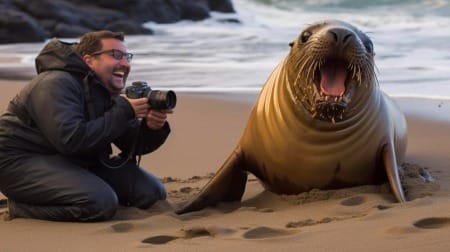
Ethics in Captive Wildlife Photography (Zoos, Sanctuaries)
Ethical wildlife photography extends to captive settings, such as zoos, animal sanctuaries, and wildlife rehabilitation centers. When photographing animals in captivity, it’s important to recognize the conditions they are living in and consider their comfort and well-being. Ethical wildlife photographers should avoid photographing animals in distress or in unnatural poses, as these images may not represent the animal’s true character or environment. Instead, they should aim to capture moments that portray the animal’s dignity and the educational or conservation efforts of the facility. Seeking permission from sanctuary staff and adhering to any guidelines provided is essential in these settings, as staff members understand each animal’s specific needs and limitations.
General Tips for Ethical Wildlife Photography Across All Environments
Regardless of the environment, ethical wildlife photography relies on patience, respect, and careful observation. Photographers should always carry out preliminary research on the species they hope to photograph and the specific habitats they will be entering. This knowledge allows them to anticipate animals’ behaviors, giving them insight into the best times to observe without disrupting routines like feeding or nesting. Using the appropriate gear—such as silent shutters, telephoto lenses, and lightweight equipment—further ensures that the photographer remains a non-intrusive presence.
By adapting these practices to fit each unique environment, ethical wildlife photographers can capture captivating, genuine moments of wildlife without causing harm or disruption. Following these guidelines helps photographers foster a deep respect for nature, ultimately creating images that inspire conservation and an appreciation for the diversity of life across all ecosystems.
5. Conservation and Awareness in Wildlife Photography
The Role of Ethical Wildlife Photography in Conservation
Ethical wildlife photography goes beyond simply capturing beautiful images; it plays a powerful role in wildlife conservation. By following responsible practices, photographers ensure that their work does not disturb animals or degrade natural habitats. Ethical wildlife photography, when done with care, showcases animals in their true environments, helping to raise awareness about the importance of preserving these ecosystems. Through their images, photographers can highlight both the beauty of nature and the threats it faces, inspiring others to take action in protecting wildlife and supporting conservation efforts. Each photograph becomes more than just art; it becomes a statement about the necessity of environmental responsibility.
Educating the Public Through Ethical Photography
One of the most impactful ways ethical wildlife photography contributes to conservation is by educating the public. Many people may never see a rare bird in flight or a herd of elephants in their natural environment. Photographers bring these experiences to a broader audience, using their images to educate people about wildlife diversity, behavior, and habitats. Ethical wildlife photography captures these animals as they are, without manipulation or artificial setups, offering an honest glimpse into their lives. This transparency builds trust and respect among viewers, helping them understand the importance of respecting wildlife in their natural state and encouraging them to support conservation initiatives.
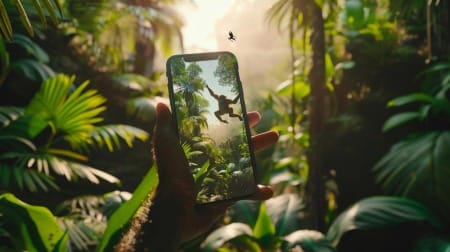
Using Social Media to Promote Conservation Awareness
Social media is a powerful platform for wildlife photographers to share their work, reach a global audience, and raise awareness about ethical practices. However, responsible use of social media is essential. Ethical wildlife photographers should ensure that their captions and descriptions include information about the species and habitat, along with any conservation concerns. For example, instead of simply posting a stunning image, photographers can explain the threats the species faces, such as habitat loss or poaching. This context enriches the viewer’s understanding and builds a narrative around the image that promotes conservation. Social media also allows photographers to connect with conservation organizations, amplify important causes, and encourage others to approach wildlife photography responsibly.
Collaborating with Conservation Organizations
Working with conservation organizations is another way that photographers can make a tangible impact. Ethical wildlife photography aligns with the mission of many conservation groups, as it seeks to protect wildlife rather than exploit it. By collaborating with these organizations, photographers can contribute their skills to important projects, such as documenting endangered species or highlighting areas under environmental threat. These partnerships allow photographers to support conservation in a direct way, and their work can be used in campaigns, educational materials, and public awareness initiatives. Working with conservation groups not only amplifies the photographer’s impact but also reinforces the importance of responsible practices in wildlife photography.

Inspiring Change Through Ethical Wildlife Photography
In addition to raising awareness, ethical wildlife photography has the power to inspire change. By presenting wildlife in a way that respects their natural behavior and environment, photographers can influence public perceptions and attitudes toward wildlife. The authenticity and respect conveyed through ethical images can foster a deeper appreciation for nature and encourage audiences to consider their own impact on the environment. For beginners and professionals alike, ethical wildlife photography serves as a reminder that each photo can be a tool for change. When photographers prioritize conservation and responsibility, they contribute to a global movement focused on protecting and preserving the world’s most vulnerable species.
In sum, ethical wildlife photography is more than a style; it’s a commitment to the welfare of the natural world. Through careful, respectful practices, photographers can make a lasting difference, using their art to inspire awareness, education, and action toward a more sustainable future for wildlife everywhere.
6. Conclusion: Commit to Being an Ethical Wildlife Photographer
Summing Up the Responsibility of Ethical Wildlife Photography
Ethical wildlife photography is more than just a technique—it’s a mindset that prioritizes respect, patience, and empathy for wildlife. By committing to ethical practices, photographers can capture the beauty and authenticity of wildlife without causing harm or disturbance. Ethical wildlife photography is about being mindful of the natural world, understanding animal behavior, and ensuring that every action taken in pursuit of a shot aligns with the well-being of the species being documented. When photographers uphold these values, their work transcends mere visuals, contributing to a global culture of respect for nature.
Inspiring Future Generations to Practice Ethical Wildlife Photography
Ethical wildlife photography also sets an example for future generations. As awareness around conservation grows, the responsibility of photographers to act ethically becomes more significant. By practicing and promoting these principles, photographers can inspire others to appreciate and protect wildlife in its purest form. This approach encourages beginners, professionals, and audiences alike to view wildlife as precious and deserving of preservation and care. Embracing ethical practices ensures that each image not only tells a story but also carries a message of respect and advocacy, fostering a world where wildlife can thrive alongside human appreciation.
Thank you for visiting our site and being part of this journey with us! We rely on the generous support of visitors like you to continue providing high-quality. Your donation, no matter the size, helps us maintain the website and create more valuable resources for everyone.


